The x86 Power Myth Busted: In-Depth Clover Trail Power Analysis
by Anand Lal Shimpi on December 24, 2012 5:00 PM ESTWebXPRT
I also included Principled Technologies' new HTML5/js web test suite WebXPRT in our power analysis. Like the rest of the tests, Intel already outperforms NVIDIA here but does so with lower power consumption. A big part of the advantage continues to be lower power consumption on the GPU rail, surprisingly enough.
TouchXPRT
As our first native client test, we turned to PT's TouchXPRT 2013. As there is no "run-all" functionality in the TouchXPRT benchmark, we had to present individual power curves for each benchmark. The story told here is really more of the same. On the CPU side, Intel is able to deliver better performance at lower power consumption. On the GPU side, performance is good enough for these tasks but once again, is delivered at lower power consumption.


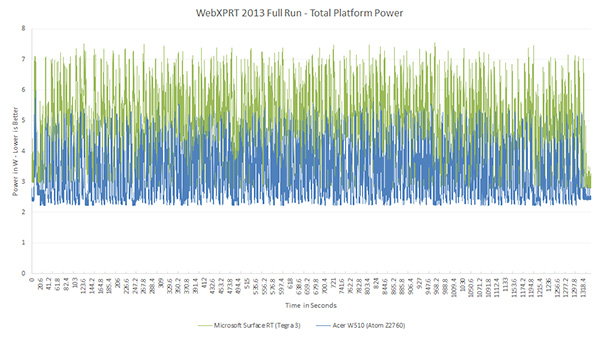

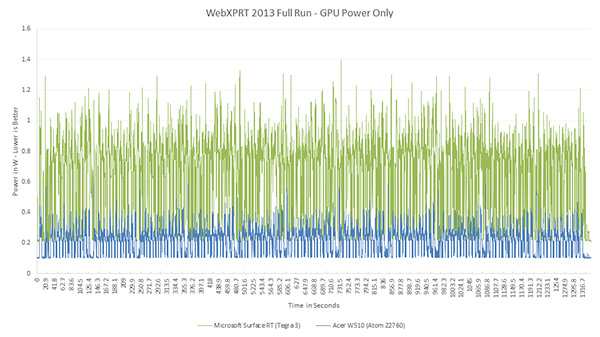
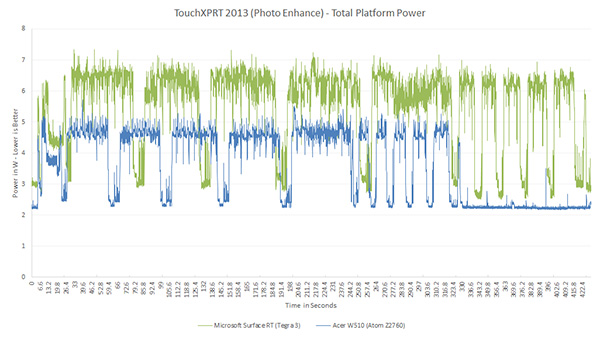
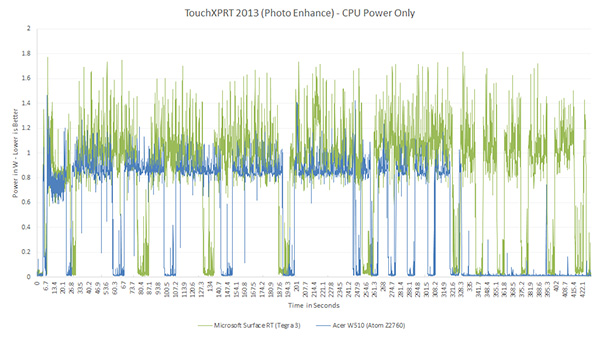
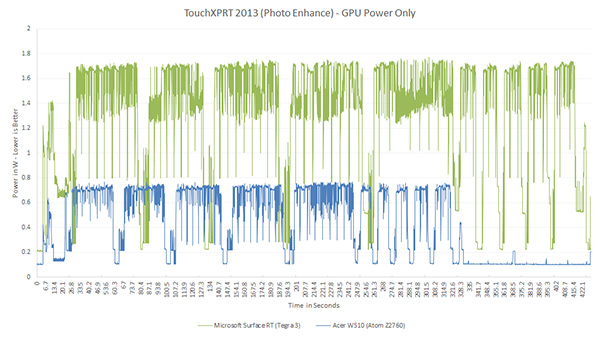

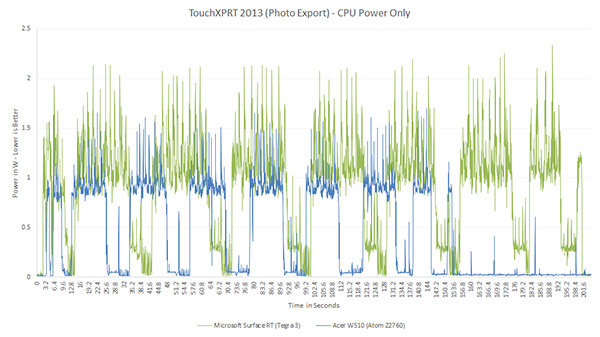
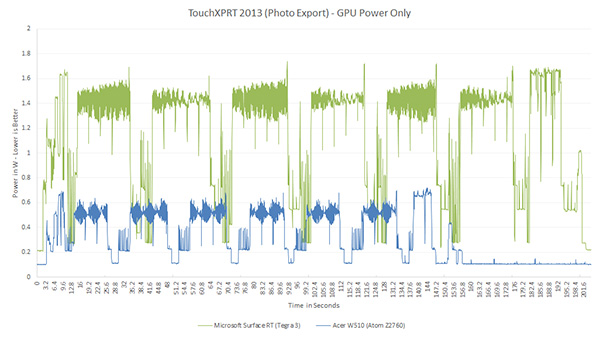
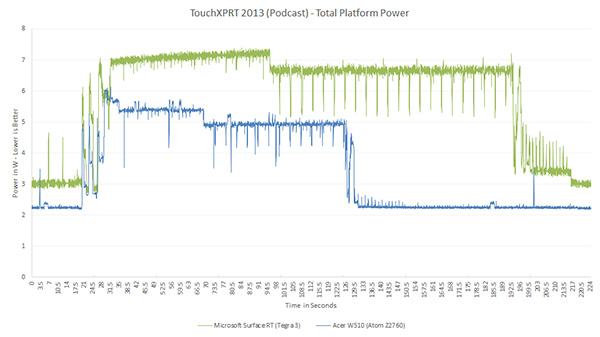

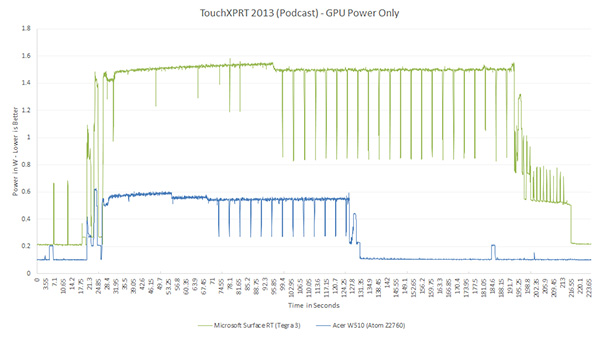
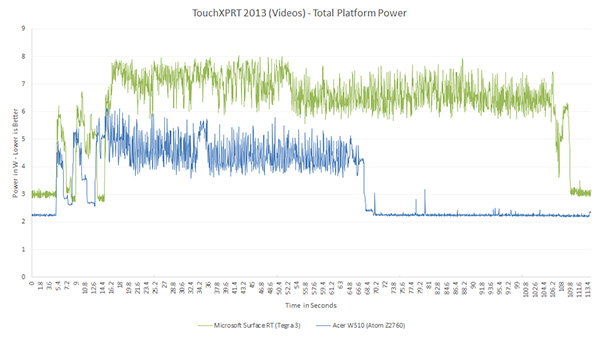
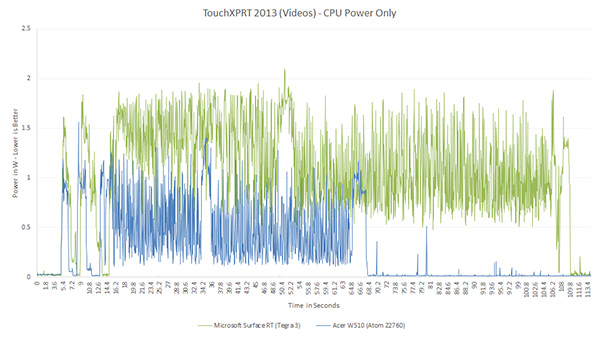
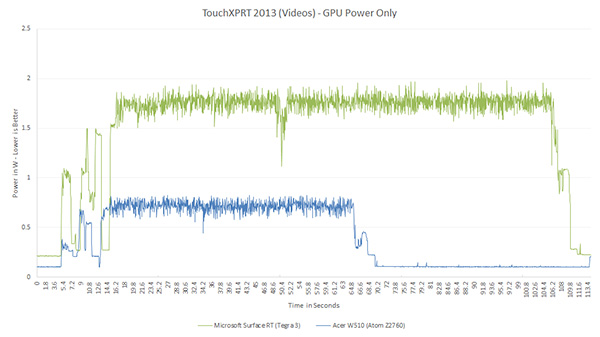








163 Comments
View All Comments
teiglin - Monday, December 24, 2012 - link
You don't have to wait for the coming years for Intel vs. ARM to replace Intel vs. AMD. The latter stopped being interesting when Bulldozer fell so short of Sandy Bridge. I was a long-time AMD fan, but they haven't released a chip I'd consider buying for myself since Deneb.kyuu - Tuesday, December 25, 2012 - link
I have to disagree. I'm far more interested in what AMD is going to bring to the x86 tablet space with Hondo than what Intel's doing, ATM.aspartame - Monday, December 24, 2012 - link
Intel cannot compete with ARM despite having the most advanced fabrication technology. Surely the new atom is somewhat more power efficient than the old Tegra 3, but it costs 3 times more.KitsuneKnight - Monday, December 24, 2012 - link
The 'new' Atom is also just a tweaked 5 year old Atom. What will be interesting is seeing how the next generation of Atoms compare against ARM's latest and greatest. Intel has proven that they can go blow for blow with ARM SoCs, despite just a couple years ago people claiming that x86 would never even be within several watts of any ARM.yyrkoon - Tuesday, December 25, 2012 - link
Technically speaking, Intel still can not approach ARM in power usage. It is all in the definition of "ARM". So, it is a matter of context.I think more appropriately people were saying that atom could never hope to approach ARM in the embedded market. Where they would be completely right. Unless you think an Atom based SoC could run under 100mw under full load.
Again . . .context.
KitsuneKnight - Tuesday, December 25, 2012 - link
People were talking about the Smartphone and Tablet spaces, not the ultra-tiny processors embedded into devices like SSDs. Intel doesn't really seem to want to compete in that space with their CPUs, as there's no profit to be made and no threat to their core business (they do occasionally compete with other products, but those aren't core products).The 'context' most people were talking about is the context that Intel is actually shown to be competitive in (at the very least against last gen devices). We'll see if they can appropriately pull the rest of their ecosystem together to lower the power consumption of the rest of the system, along with further reducing the power consumption of Atom while upping the performance.
yyrkoon - Tuesday, December 25, 2012 - link
This discussion started years ago in the embedded space where it should have stayed. Where ARM is still truly RISC in natureHowever, no less than a year ago( and probably more like 2 years ago ), several ARM low power desktop systems were demonstrated to use only 1-2w power consumption under full load. On YouTube no less. While Intel ( with atom ) was still fumbling around above 10w.
Having said that. "Competitive" is still a subjective term in this case.
At some point one has to realize, <this company> has <this> advantage over <another company>. But at what cost ? Which is partly why partners of ARM still exist in this market space.
jjj - Monday, December 24, 2012 - link
Funny how you compare 2 chips running 2 different OSes and you deem the results conclusive. How low can you go?karasaj - Monday, December 24, 2012 - link
Except if anything Windows RT will draw less power than Windows 8.Also, if you hook a resistor/volt meter etc. up to the CPU itself, the OS isn't going to do much.
Reikon - Monday, December 24, 2012 - link
Windows 8 and RT are essentially the same OS for different instruction sets with a few arbitrary feature differences unrelated to performance.